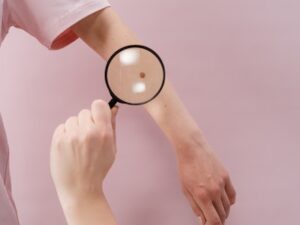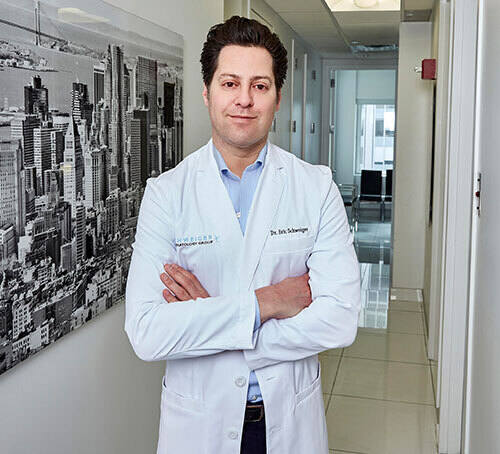Surprising Skin Cancer Risk Factors

If you know anything about skin cancer and how to prevent it, you probably know to stay out of the sun and avoid tanning beds like the plague. But what about other risk factors? While frequent sunburns are a fairly obvious one, some of the others may surprise you. From red hair to white wine, here are six surprising things that can put you at greater risk for skin cancer.
Traits and Activities that Might be Putting You at Risk:
- Red hair
We’ve got some bad news for all you redheads: having red hair increases your risk of developing melanoma, the most dangerous type of skin cancer. Why? Red hair is caused by a genetic variation, and it’s that same variation that can activate a genetic cancer-causing pathway when a redhead is exposed to UV light. In redheads, these variations occur at a rate 42% higher than average, which means their skin cancer risk is that much greater. There’s even some evidence that children who have at least one redheaded parent are at increased risk of developing skin cancer. So if red hair runs in your family, you might want to be doubly aware about checking for signs of skin cancer.
- Freckles
The same gene responsible for red hair also causes freckles, which means those lovely sun kisses actually bring a not-so-lovely risk for melanoma, just like red hair. (At this moment, we’d like to offer our condolences to any freckled redheads currently reading this.)
- Air travel
Did you know that UV light becomes stronger the higher up you go? In terms of skin cancer risk, that’s bad news for people who fly frequently, like pilots and flight attendants. Most airplanes travel at around 30,000 feet up, where the UV light is twice as strong as it is at ground level. And that light gets even stronger when an aircraft flies over snow or clouds. Plus, airplane windows don’t actually offer much protection from UV rays. So if you’re a frequent flyer, you may want to apply some broad-spectrum sunscreen before taking off. - Living in the mountains
A higher elevation means a higher risk of skin cancer, which means people who live in the mountains are more likely to develop skin cancer than people who live at sea level. This is partly because of stronger UV light, and partly because of thinner air. Although less pollution, dust, and moisture at higher altitudes, that means less air particles to reflect light and more intense UV exposure. That’s probably why the rate of melanoma diagnoses in Colorado runs 15% higher than the national average.
Incidentally, living in the tropics can also increase your risk of skin cancer; UV exposure is stronger the closer you are to the equator. - Driving
Surprised? Yes, even something as simple as driving in a car can potentially increase your risk of skin cancer. According to a study done by the St. Louis University School of Medicine, around three fourths of early-stage cases of melanoma occur on the left side of the body, which is the side of your body that faces the window when you’re driving. While car windows block most UVB – the stronger type of UV rays – they still let in about 63% of UVA rays, which means there’s still a risk for UV exposure.If you want to minimize this risk, you might consider either wearing sunscreen every time you drive or putting UV-blocking film over your car windows.
- White wine
What? Surely not wine? It’s sad but true: a recent study by Brown University found that drinking a glass of white wine every day can increase your risk of melanoma by 13%. Red wine seems to be OK, though.So aside from not being a freckled, redheaded mountain man who drinks a glass of white wine every day, how can you minimize your risk of developing skin cancer?The best approach is to lather on the sunscreen, stay away from tanning beds, and see your dermatologist regularly for a skin check. You can also keep an eye out for any odd-looking moles or spots on your body, especially if you’re at increased risk.Another surprising fact about skin cancer is that it’s very easy to treat in its early stages. That’s why you’ll often hear the maxim: when it doubt, check it out. Being aware of your risk factors and seeking help early could make all the difference when it comes to your treatment.
